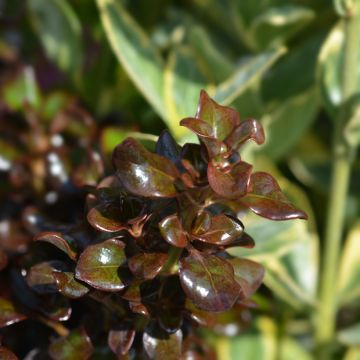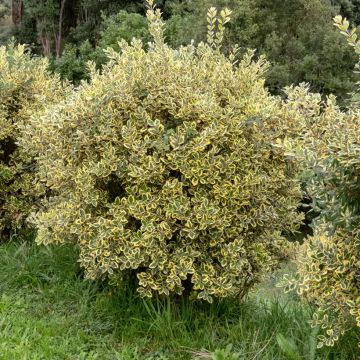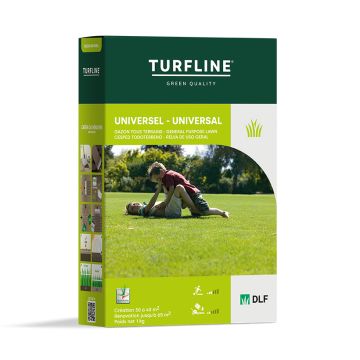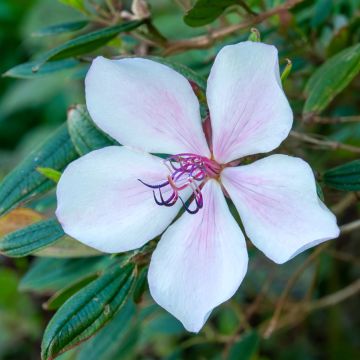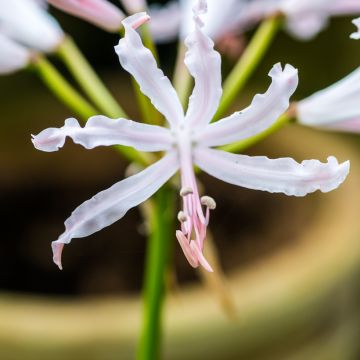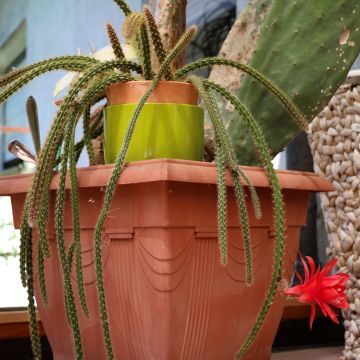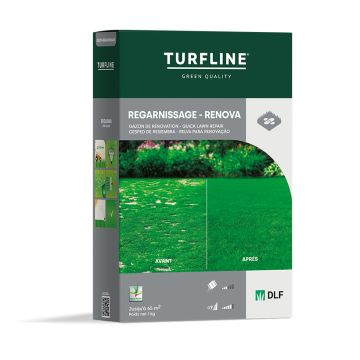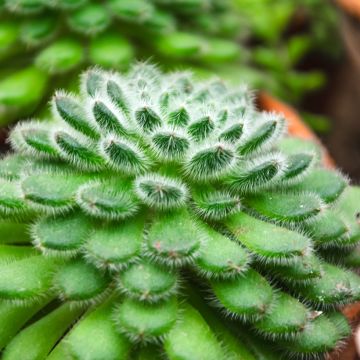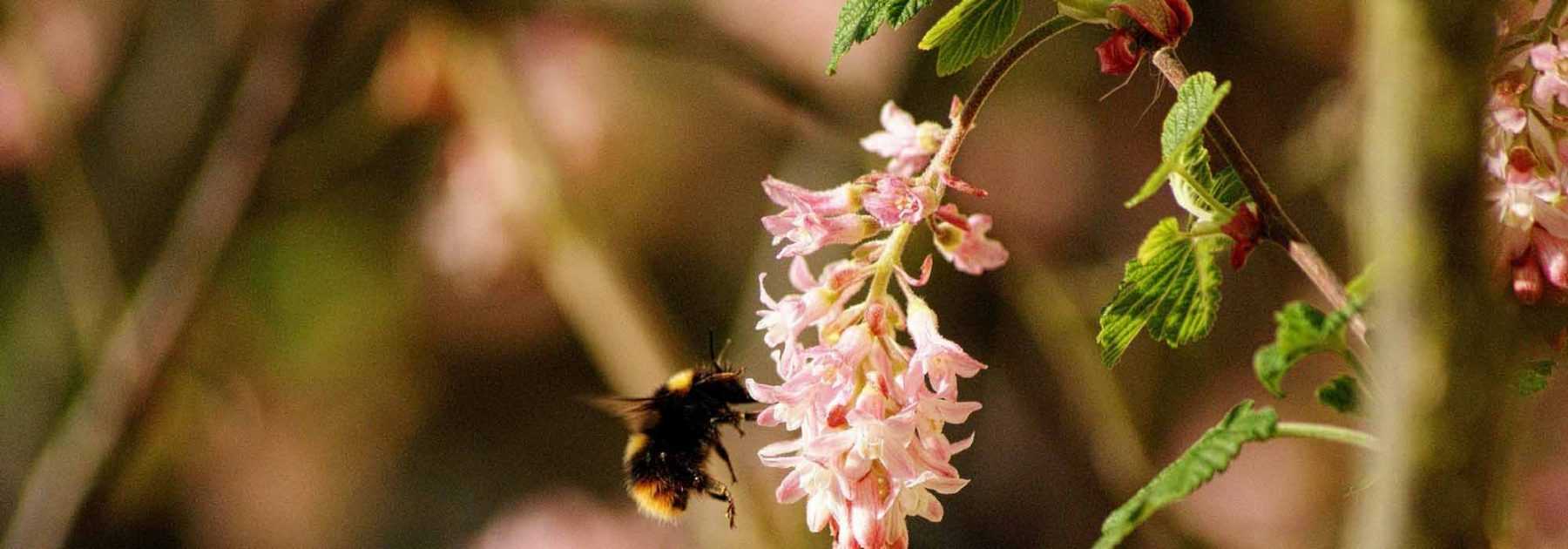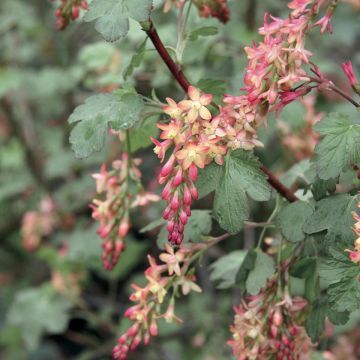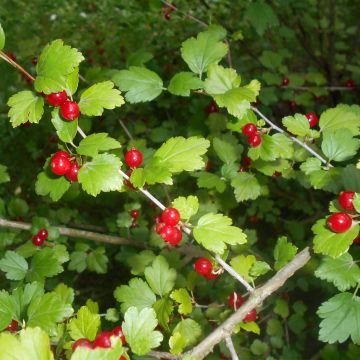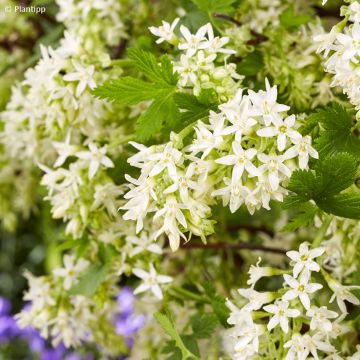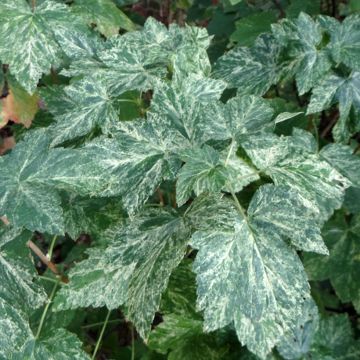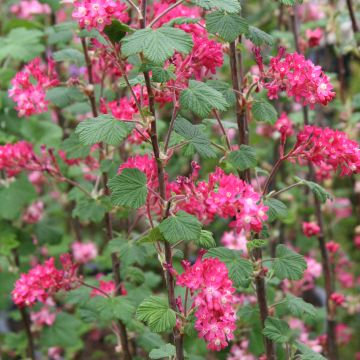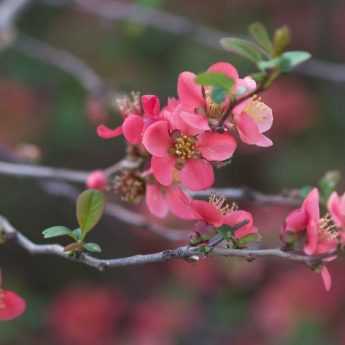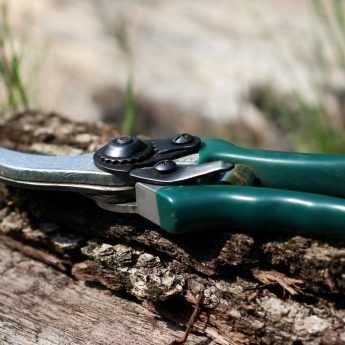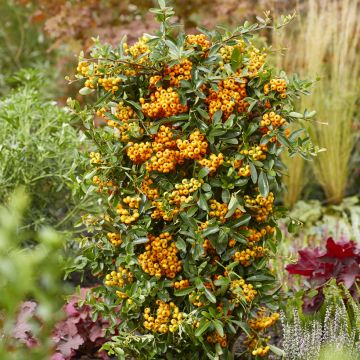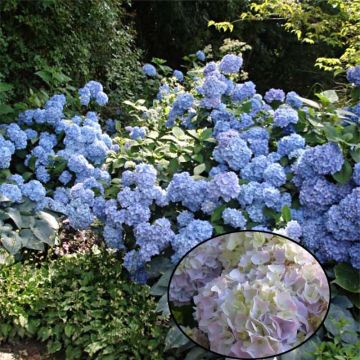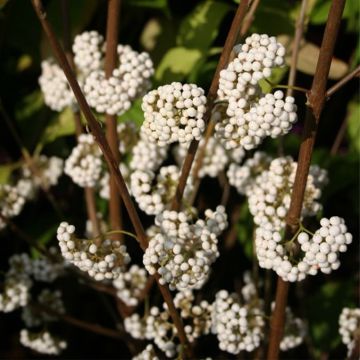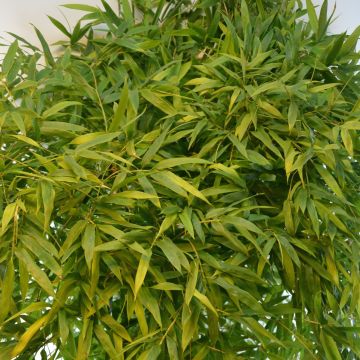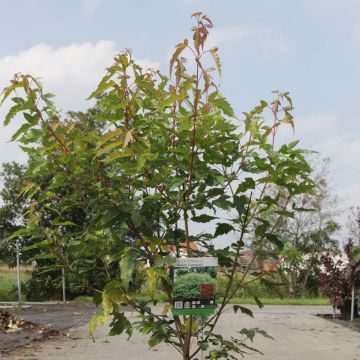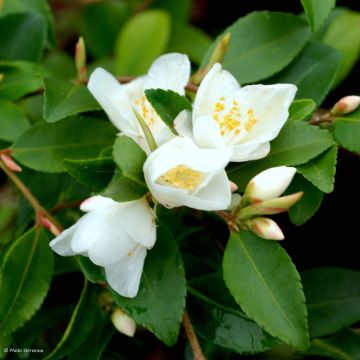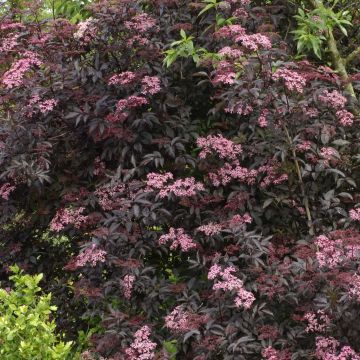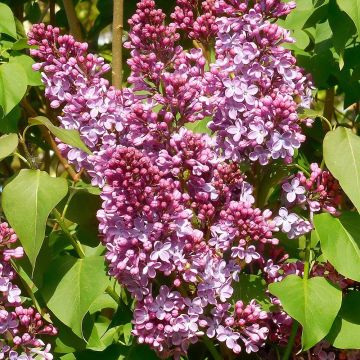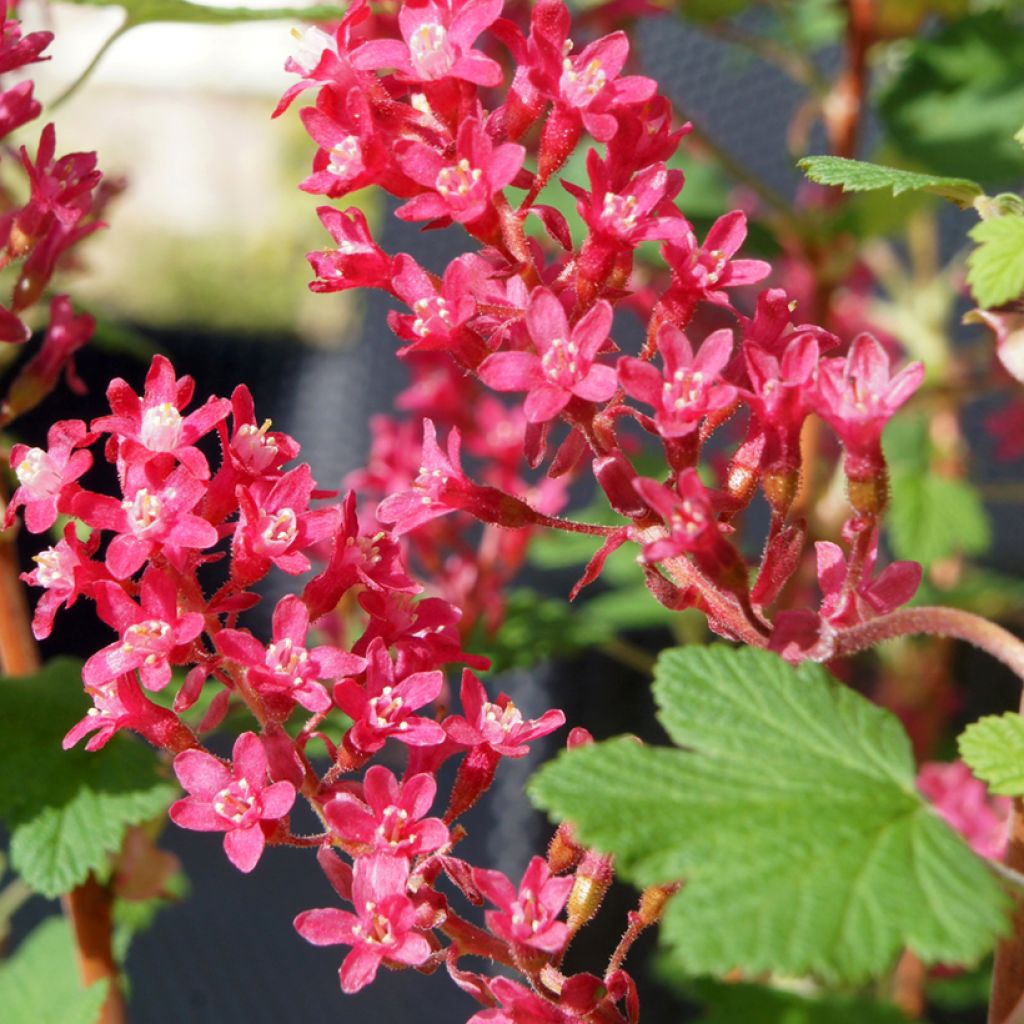

Ribes sanguineum Amore
Ribes sanguineum Amore
Ribes sanguineum 'Annys2003' Amore
Flowering Currant, Red-flowering Currant
Why not try an alternative variety in stock?
View all →This plant carries a 24 months recovery warranty
More information
We guarantee the quality of our plants for a full growing cycle, and will replace at our expense any plant that fails to recover under normal climatic and planting conditions.
From €7.90 for pickup delivery and €6.90 for home delivery
Express home delivery from €8.90.
Does this plant fit my garden?
Set up your Plantfit profile →
Description
The Amore Flowering Currant is a particularly floriferous selection, with deep red flowers that emit a sweet vanilla fragrance. In spring, they bloom in small clusters along the branches. It is a very hardy shrub, with deciduous light green foliage that has a subtle blackcurrant aroma, which is why it is also known as "False Blackcurrant". Plant it in a small flowering hedge, mixed with other shrubs that bloom at different times. Its compact size also makes it suitable for container gardening.
Ribes sanguineum Amore 'Annys2003', bred by van Nijnatten in the Netherlands in 2014, is a cultivar of the flowering currant. It belongs to the Grossulariaceae family. This particularly robust shrub species originates from the western United States. In nature, it is found mainly on rocky and wooded slopes from southern California to the northwest of the United States. Amore, much more compact than the species, reaches about 1.50 m in height and spreads over 1 m, with a moderately fast growth rate. It has an upright, bushy, compact growth habit. In April-May, after the leaves have emerged, pendulous clusters measuring about 7 cm long appear along the branches. They consist of small flowers that are red with a touch of pink, highlighted by a white eye. This fragrant flowering follows that of the Forsythia. The light green, 5 to 10 cm long leaves, have five shallow irregularly toothed lobes. They release a delightful blackcurrant scent when crushed. The branches of this deciduous shrub are bare in winter.
Ribes sanguineum Amore will find a place in all gardens, in a mixed hedge, shrub borders, or even as a standalone specimen. It is equally charming when grown in a container. In addition to its classic but charming association with Forsythias, you can also plant it in a spring scene with Japanese quince, Chinese almond tree Prunus triloba 'Multiplex', or a white double-flowered plum tree Prunus glandulosa Alba Plena. Planted in groups of three or four, mixed together, Flowering Currants create an extraordinary effect, especially at the back of perennial borders. Finally, to fully enjoy its flowers and fragrance, you can cut flowering branches for your bouquets.
Plant habit
Flowering
Foliage
Botanical data
Ribes
sanguineum
'Annys2003' Amore
Grossulariaceae
Flowering Currant, Red-flowering Currant
Cultivar or hybrid
Other Ribes - Flowering Currants
View all →Planting and care
Plant the Flowering Currant Bush Amore in ordinary, deep, rich, moist soil, without excessive limestone. This bush will thrive in partial shade or in the sun, but in a non-scorching exposure. Pruning is not essential, except to remove dead wood or correct a slightly sparse habit. The branches should be pruned by one-third of their size after flowering. When planting, you can bury part of the collar to promote good rooting.
Maintenance pruning: if you simply want to maintain the shape of the bush, just remove weak or overly arched branches and dead wood. Rejuvenation pruning: for subjects that have become too bulky or have lost their bushy shape (thinning at the base, sparse branches), it is advisable to prune the branches to 50 cm from the ground. This can be done all at once (rigorous pruning, for older subjects) or over 3 years (pruning one-third of the branches each year, ensuring a balanced appearance for the bush). The bush will then form new shoots.
Planting period
Intended location
Care
Planting & care advice
This item has not been reviewed yet - be the first to leave a review about it.
Hedge shrubs
Haven't found what you were looking for?
Hardiness is the lowest winter temperature a plant can endure without suffering serious damage or even dying. However, hardiness is affected by location (a sheltered area, such as a patio), protection (winter cover) and soil type (hardiness is improved by well-drained soil).

Photo Sharing Terms & Conditions
In order to encourage gardeners to interact and share their experiences, Promesse de fleurs offers various media enabling content to be uploaded onto its Site - in particular via the ‘Photo sharing’ module.
The User agrees to refrain from:
- Posting any content that is illegal, prejudicial, insulting, racist, inciteful to hatred, revisionist, contrary to public decency, that infringes on privacy or on the privacy rights of third parties, in particular the publicity rights of persons and goods, intellectual property rights, or the right to privacy.
- Submitting content on behalf of a third party;
- Impersonate the identity of a third party and/or publish any personal information about a third party;
In general, the User undertakes to refrain from any unethical behaviour.
All Content (in particular text, comments, files, images, photos, videos, creative works, etc.), which may be subject to property or intellectual property rights, image or other private rights, shall remain the property of the User, subject to the limited rights granted by the terms of the licence granted by Promesse de fleurs as stated below. Users are at liberty to publish or not to publish such Content on the Site, notably via the ‘Photo Sharing’ facility, and accept that this Content shall be made public and freely accessible, notably on the Internet.
Users further acknowledge, undertake to have ,and guarantee that they hold all necessary rights and permissions to publish such material on the Site, in particular with regard to the legislation in force pertaining to any privacy, property, intellectual property, image, or contractual rights, or rights of any other nature. By publishing such Content on the Site, Users acknowledge accepting full liability as publishers of the Content within the meaning of the law, and grant Promesse de fleurs, free of charge, an inclusive, worldwide licence for the said Content for the entire duration of its publication, including all reproduction, representation, up/downloading, displaying, performing, transmission, and storage rights.
Users also grant permission for their name to be linked to the Content and accept that this link may not always be made available.
By engaging in posting material, Users consent to their Content becoming automatically accessible on the Internet, in particular on other sites and/or blogs and/or web pages of the Promesse de fleurs site, including in particular social pages and the Promesse de fleurs catalogue.
Users may secure the removal of entrusted content free of charge by issuing a simple request via our contact form.

































